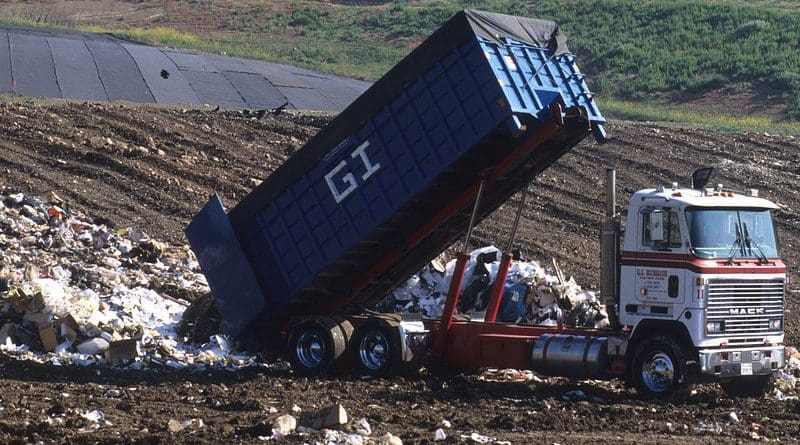US Landfills Emit Significant Amounts Of Methane
A new survey finds that United States open landfills are emitting significant amounts of methane, one of the most important greenhouse gases causing global climate change.
The study by Daniel Cusworth and colleagues was conducted using airborne imaging spectrometers that observe methane emissions and is the largest airborne or ground-based survey of U.S. landfills to date, representing 20% of the nation’s landfills.
Among the 250 sites across 18 states surveyed between 2018 and 2022, the researchers were able to detect significant point-source methane emissions at 52% of sites. This percentage “far exceed[s] the point-source detection rate from other methane emission sectors,” Cusworth et al. conclude, suggesting that solid waste is an important contributor to greenhouse gas emission in the U.S.
The findings also uncover a large discrepancy in the emission estimates calculated by airborne detection and more traditional estimates made by walking over landfill sites. On average, aerial emission rates were a factor 2.7 higher than those reported to the U.S. Greenhouse Gas Reporting Program, the researchers note.
Point-source emissions are emission “hotspots” confined to a local area, as compared to emissions spread over a broad area of the landfill. Point-source emissions are important to regulate because they often represent a significant emission source and are more likely to be linked to the dynamic operations of a landfill. The point-source emissions observed in the study sometimes persisted for months or even years.
The researchers even found a distinct population of landfills where point-source activity continued almost throughout the entire study period.
“This long-duration population represents more than 60% of all landfills, and 87% of all quantified emissions,” the researchers write.

